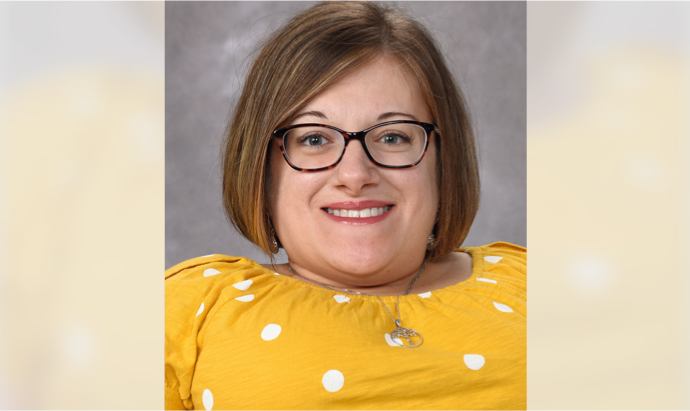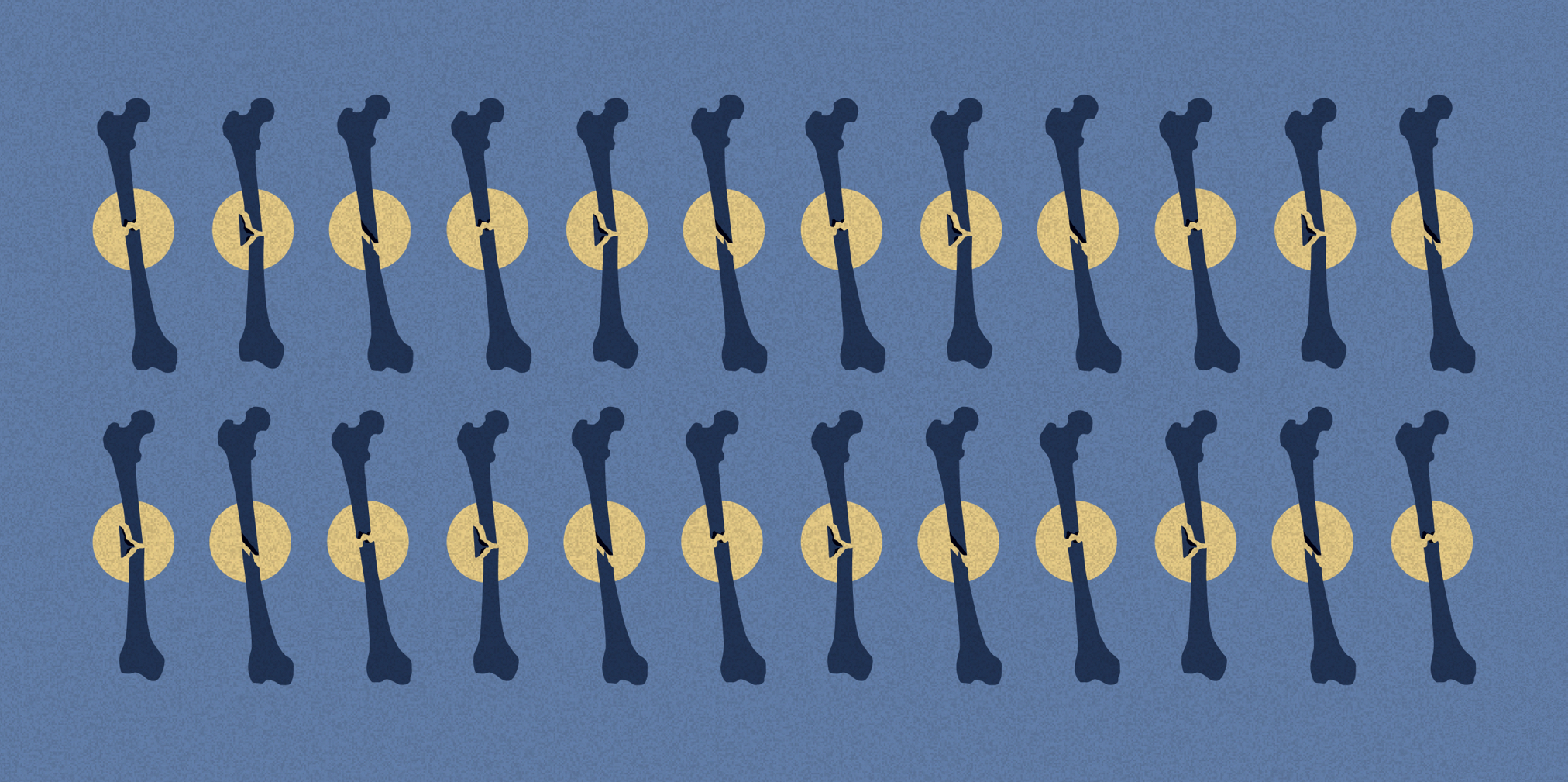Summary
When a baby girl is born with two broken femurs, doctors don’t notice the bluish-grey discoloration of her sclera.
Guest

Pamela Smith, M.D.
Dr. Smith was born and raised in a small town in southeastern Pennsylvania. She received her Bachelor of Science degree from Alvernia University and her Medical Degree from Pennsylvania State University College of Medicine in 2013. She completed her pediatric residency at the Children’s Hospital of Georgia through Augusta University’s Medical College of Georgia. Dr. Smith later completed her training in pediatric endocrinology and metabolic bone disorders at Washington University in St. Louis and the Center for Metabolic Bone Disease and Molecular Research at Shriners Hospital for Children in St. Louis in 2019.
After graduation, Dr. Smith joined the Endocrinology Division at Phoenix Children’s Hospital and has focused on developing a growing multi-disciplinary Skeletal Health Clinic. She is also Clinical Assistant Professor for the Department of Child Health, University of Arizona College of Medicine – Phoenix. Her clinical and research interests include pediatric bone disorders, such as osteogenesis imperfecta, X-linked hypophosphatemic rickets, hypophosphatasia, fibrous dysplasia, vitamin-D deficiency rickets, and secondary osteoporosis.
Outside of her work, Dr. Smith enjoys spending time with her husband and young daughter, travelling, cooking, and the arts.
American Board of Pediatrics Certifications:
- Pediatric Endocrinology – 2019
- General Pediatrics – 2017
Professional Affiliations:
- American Academy of Pediatrics
- Pediatric Endocrine Society
- Endocrine Society
- Osteogenesis Imperfecta Foundation
- Soft Bones, Inc.
- American Society for Bone and Mineral Research
Academic Affiliations:
University of Arizona College of Medicine – Phoenix
Publications:
Smith PS, Gottesman GS, Zhang F, et al. X-Linked Hypophosphatemia: Uniquely Mild Disease Associated With PHEX 3′-UTR Mutation c.*231A>G (A Retrospective Case-Control Study). J Bone Miner Res. 2020;35(5):920-931.
Transcript
DDx SEASON 3, EPISODE 5
A fractured childhood
RAJ:
This season of DDx is brought to you by Ultragenyx Pharmaceutical corporation.
Opening
RAJ:
The year is 1983.
A baby is about to be born at a hospital in Reading [RED-ing], Pennsylvania. Doctors say the child has a severe form of dwarfism and is unlikely to survive. But this baby defies all odds.
Despite being born breech with broken legs, doctors rescind their earlier diagnosis. She’s normal length and weight. A healthy baby girl.
The parents are elated.
But there’s something vital that doctors don’t see.
The whites of this baby’s eyes are a greyish blue, her broken femur bones are bowed and shortened, and her head is slightly larger than normal.
These symptoms point to a rare disease that will become a lifelong condition. This baby is our patient.
And in 29 years, she’ll be our doctor.
Show intro
RAJ:
This is DDx, a podcast from Figure 1 about how doctors think.
This season is all about rare diseases.
I’m Dr. Raj Bhardwaj.
Today’s case comes from Dr. Pamela Smith, a pediatric endocrinologist working at the Phoenix children’s hospital in Arizona, specializing in metabolic and genetic bone disorders.
Dr. Smith has been compensated by Figure 1 for her participation in this episode.
Chapter 1 – Early symptoms
RAJ:
Two months after our patient was born, signs started to point to something being terribly wrong.
DR. SMITH:
I was inconsolable one evening and my mom went into my room and went into the crib. And one half of my body was flailing and normal newborn kind of crying and the other side of my body was limp. And my mom was terrified and thought, Oh my gosh, I don’t know if she’s had a stroke or what has happened.
RAJ:
The family rushed the baby to their local community hospital, where care providers identified a broken arm and a broken leg.
DR. SMITH:
And my parents were terrified because they thought, how would a two-month-old have a broken arm and a broken leg? And they were sure that they would go to jail. They were very afraid. They’d be accused of child abuse because they couldn’t think of other reasons why I would have a broken arm and a broken leg at that age.
RAJ:
Luckily an orthopaedic surgeon was on call in the ER that evening.
DR. SMITH:
And thankfully he was familiar with Osteogenesis imperfecta or OI for short. And he said, I think she has this bone disease. And from there it just became my formal diagnosis.
RAJ:
Osteogenesis imperfecta, or OI, is also known as brittle bone disease. It’s a genetic disorder characterized by soft bones that fracture easily.
But in our patient’s case, if OI is not detected in utero with genetic testing – which did not exist when she was born – and symptoms are relatively mild, they can be easily missed.
More prominent signs of OI can be misdiagnosed as rickets, dwarfism or skeletal dysplasia.
So far more than 16 types of OI have been identified, but it’s a complex condition that is constantly evolving.
Chapter 2 – No cure
RAJ:
There is no cure for OI, only treatments to help prevent bone deformities and fractures. But for our patient, growing up in the early eighties didn’t leave her with a lot of options.
DR. SMITH:
Mostly everything was surgical or orthopedic. It was reactive oftentimes rather than proactive, especially in a really small baby, you know. Back then, there weren’t really any medications used for OI. There were no bone-strengthening medications really used, so a lot of my medical management was fracture care.
I was fracturing both legs frequently. I couldn’t pull the stand. I would break my legs when I would try normal development milestones. I would naturally try to do things and then break… I was at times I was fracturing once a month. I had over 200 broken bones through childhood, so they knew it had to be on the more severe side of things.
RAJ:
Our patient underwent rodding surgery, where a metal rod is inserted into bones to gain stability, but doctors still struggled to categorize her OI within a recognized type.
DR. SMITH:
It was kind of, oh maybe it’s this disorder or maybe it’s that disorder. There was no genetic testing. I was probably eight years old till they decided to try to get more formal typing of my disease. My collagen was looked at through skin biopsy and they diagnosed me type three, four. So not quite three and not quite four.
RAJ:
But even with a more formal diagnosis, treatment was still limited.
DR. SMITH:
So, you know, when I was in grade school, at that point I had been diagnosed with type three and bisphosphonates had come onto the scene around that time.
RAJ:
Bisphosphonates work to slow down bone loss, increase bone density and reduce the risk of fractures. They’re now a standard of care when it comes to treating OI – even in infants.
DR. SMITH:
But at that point, it was very early in research and kind of research-based treatment. So initially my mom would have had to take me to Montreal Canada to receive bisphosphonate therapy. My mother looked into that, and that was just not an option for her situation. So I did miss kind of a window where bisphosphonates were coming onto the scene while I was growing; medical treatment in growth is so important. And you kinda miss that window if, if you’re, you’re not catching growth.
Chapter 3 – Patient becomes the doctor
RAJ:
Although our patient still faced huge physical challenges, her life underwent a drastic shift when she discovered a passion for medicine.
DR. SMITH:
I don’t have the classic story. I’ve always wanted to be a doctor since I was a little girl, because when I was a little girl, I didn’t think I could be a doctor. So I put that out of my mind. This is not an option. Like I couldn’t, I didn’t even think about it.
RAJ:
So she settled on a degree in fine art. But during one class, everything changed.
DR. SMITH:
I was in anatomy class, my instructor was a medical doctor. And I just loved medicine. I loved anatomy and I was really getting into it. And my instructor asked me to tutor, become a peer tutor.
And one day I was sitting with a student, like probably 19 years old and she goes, have you thought about medical school? I was like, what? And I really was thinking, are you crazy? Like you, you see me in my wheelchair? How would I do medical school? Like, I just couldn’t fathom that I’d never met another medical provider with a disability. So to me, this was preposterous.
And I went home and I looked it up online and there was actually a community, like a support group online for physicians with disabilities. I was like, oh my gosh, this is a thing. Like, people can do this. So my mind was blown and the next day I went to college the next day, I went to my class and I approached my anatomy instructor, who was a medical doctor. And I said, and I was like, so terrified. And I thought she’s probably gonna laugh at me, but I said, w w what, what do you think about like, could I go to medical school?
And she was like, yeah, why not?
Chapter 4: Lessons
RAJ:
It was only when our patient was a fellow in pediatric endocrinology that she got genetic testing which told her more information about the type of OI she had.
She learned that what she had was a result of a spontaneous mutation, not something that was inherited from her parents.
This information didn’t affect her treatment, but perhaps someday, when more is known about her specific type of OI, it will.
DR. SMITH:
What I knew, it just changes the story and maybe it will change down the road. Something because maybe if you have a dominant mutation and colony two this therapy will be available.
So my whole life, I thought I had this recessive gene, my family thought that, and then I had gene testing and I have a dominant mutation. Which is often spontaneous, meaning maybe, maybe my parents did not carry because if they did carry it, they would have it. I felt sad for my family because I think there was a lot of guilt around what they were told. That they carry this gene.
RAJ:
As a physician with OI who treats patients with the condition, Dr. Smith has watched treatment improve.
DR. SMITH:
Compared to 30 years ago, it was kind of slowly changing, but I feel like it’s become this snowball where treatment options and technologies have just expanded care so much. It seems with time that we’re heading toward researching medicines that build bone rather than stop bone breakdown.
RAJ:
Dr. Smith’s special connection with her patients allows her to see things that many doctors treating patients with OI might miss.
DR. SMITH:
I think we’re quick to see skeletal, malformation and disability. Rather than what that person’s potential is. And the other challenges they might have that we don’t realize, you know, psychosocial function pain, sometimes pain is overlooked, um, independence, peers. There’s just so much that plays a role into the person and their, and their well-being.
And then there’s also more that needs to be cared for, uh, children with a lie or at risk of at some heart cardiac, some pulmonary, and then just remembering they still need regular care routine care. You know, they still need the routine screening and the labs and the physical exams by a primary doctor. So it is easy to forget the standard of care things when we’re so, um, kind of overwhelmed with the primary disorder and we can kind of get lost and as far as routine care as well.
RAJ:
Dr. Smith also has wisdom for parents and caregivers of those with OI.
DR. SMITH:
It can be very overwhelming. But you have to be your own best advocate and your child’s best advocate. And the only way you’re going to do that is by finding resources that are reliable for your own, advocacy and for expectations, what you should expect from your medical provider, what you should, be asking about, questions.
And I think it’s important. Some families can be very overwhelmed and just kinda turn a blind eye to everything in the community, but reach out, be a part of the community. It is a community, most rare diseases have an organization or some kind of networking and just stay involved and stay on top of what’s going on.
And don’t disconnect.
Show closing
RAJ:
Thanks to Dr. Pamela Smith for speaking with us.
This is DDx, a podcast by Figure 1.
Figure 1 is an app that lets doctors share clinical images and knowledge about difficult-to-diagnose cases.
I’m Dr. Raj Bhardwaj, host and story editor of DDx.
You can follow me on Twitter at Raj BhardwajMD.
Head over to figure one dot com slash ddx, where you can find full show notes, photos and speaker bios.
This episode was brought to you by Ultragenyx Pharmaceuticals Corporation. Thanks for listening.






